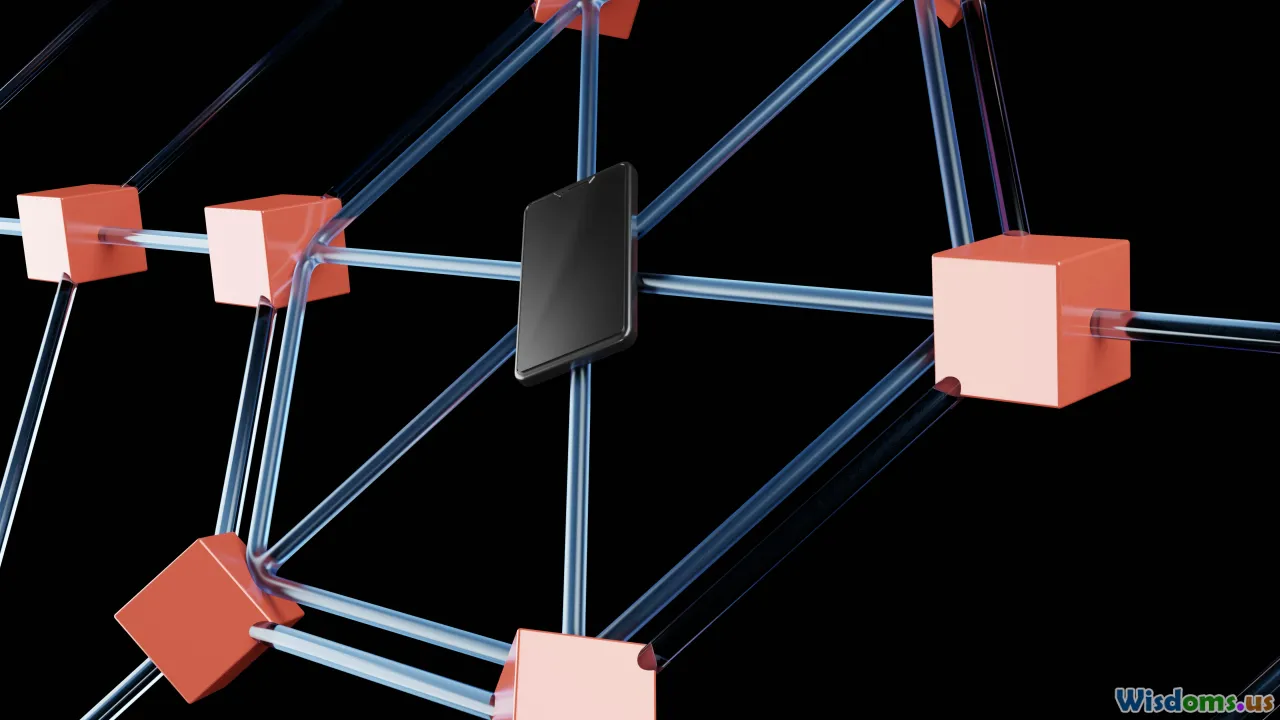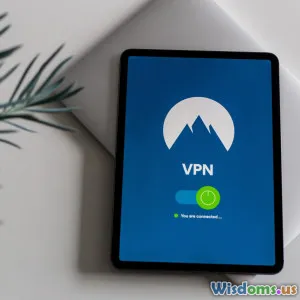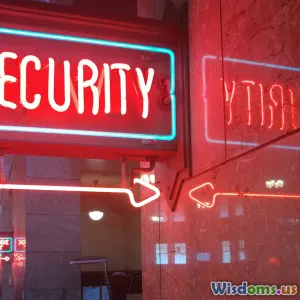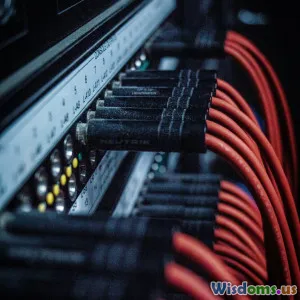
How I Hardened My Network Architecture After a Major Data Breach
14 min read Discover effective strategies to fortify your network architecture after experiencing a data breach, including lessons learned and practical security enhancements. (0 Reviews)
How I Hardened My Network Architecture After a Major Data Breach
The sense of dread when a data breach is discovered is impossible to forget. For years, I believed our network architecture was robust, updated, and secure. But that illusion was brutally shattered one late night when we detected the breach—hundreds of thousands of sensitive records, exposed. After the post-mortem and incident response chaos subsided, I faced a sobering truth: our network’s security stance was neither comprehensive nor future-proof. Here’s a candid walkthrough of how I re-engineered our architecture, adding depth, transparency, and resilience.
Rethinking Perimeter Security

The breach revealed a false sense of safety fostered by traditional, perimeter-focused defenses like firewalls and VPNs. Attackers slipped past, exploiting privileged credentials and lateral movement tactics—while our monitoring concentrated on ingress points alone.
Concrete steps taken:
- Segmenting the Network: Inspired by the concept of zero-trust, I segmented network traffic using VLANs and robust ACLs (Access Control Lists). Instead of a flat network where prod, dev, and office PCs co-mingled, strict boundaries were enforced.
- Micro-Segmentation: Leveraging tools like VMware NSX, we built micro-segments around critical workloads. Access between segments was permitted only by strict need and continuously logged.
- Enforcing Strong Perimeter Gateways: Our firewalls were modernized, using application-aware capabilities with intrusion detection/prevention (IDS/IPS), geo-fencing, and automated threat blocking.
Real-world insight: On reviewing logs, I discovered that lateral movement by the attackers went undetected mainly due to open East-West traffic. After segmentation, test attacks (with red team exercises) showed direct attacks were automatically contained in smaller segments, effectively isolating threats.
Deploying Zero Trust Principles

Buzzwords often get thrown around, but after the breach, 'Zero Trust' became a guiding light. No user, device, or packet was exempt from authentication or authorization—regardless of location.
Implementing Zero Trust:
- Identity-Centric Access: Both users and workloads required verified identities. We rolled out strong MFA (multi-factor authentication) everywhere, not just for VPN access. Single sign-on (SSO) was secured with certificate-based authentication.
- Least Privilege Access: Role-based access control (RBAC) and just-in-time privilege escalation became default. Employees couldn't hold administrative privileges indefinitely.
- Continuous Assurance: Session behavior was continuously monitored. Suspicious sessions—like a user logging in from two geographies—immediately triggered auto-lock.
Example: To illustrate the impact: a contractor’s phishing-compromised account attempted lateral movement, but zero-trust controls blocked access to restricted production segments. Prior, this would likely have gone undetected.
Layered Defense: Beyond the Usual

A single defensive control is a single point of failure. Inspired by the 'Defense in Depth' mantra, I invested in diverse controls at every possible layer.
Tangible Adjustments:
- Host-Based Protections: Endpoint detection and response (EDR), like CrowdStrike or SentinelOne, was rolled out across laptops, servers, and even DevOps containers.
- Patch Management: The breach had leveraged an unpatched internal server. Automated patch tools (eg, WSUS, Ansible, OS built-ins) ensured no device lagged in security updates.
- Encrypted Traffic Everywhere: All internal APIs, databases, and communications were restricted to TLS 1.2+ encryption.
- Cloud and SaaS Security: Web app firewalls (WAFs) and secure API gateways shielded data in cloud workloads, plugging easy-to-miss backchannels.
Outcome: After implementation, an external pentest showed thwarted attempts at privilege elevation and lateral spread, confirming the success of layered controls.
Embracing Network Visibility and Logging

In the aftermath of the breach, the absence of reliable, actionable visibility had proven crippling. We moved from basic log dumps to a sophisticated, searchable monitoring ecosystem.
Actions Deployed:
- SIEM Platform Rollout: Deployed Splunk for real-time aggregation of all logs: firewall, EDR, app, and user activity. Custom correlation rules flagged suspicious patterns.
- Full Packet Capture: On sensitive network segments, we enabled full-content packet capture with a rolling two-week window.
- Asset Inventory & Alerts: Maintained live inventories of every endpoint and network device to spot anomalies such as rogue equipment.
An Example Detected: This new visibility exposed unauthorized IoT devices that had previously blended into background noise. ACLs blocked them and policies were updated.
Developing Incident Response Protocols

Having lived the chaos and confusion of an actual breach, crafting disciplined, well-rehearsed incident response plans was non-negotiable.
Key Components:
- Detailed Playbooks: Each attack scenario—ransomware, credential theft, DDoS—got a tailored playbook, kept fresh and tested every quarter.
- Automated Containment: Integrated EDR and firewall controls could instantly isolate or block suspect endpoints based on alert triggers.
- RACI Matrices: We assigned clear roles (Responsible, Accountable, Consulted, Informed), so no task was missed or repeated in the heat of incident response.
- Communication Chart: Set pathways for reporters (users, vendors), responders (SOC, IT, external), and exec-level notifications, including legal and PR hooks.
One Incident Response Drill: Table-top exercises showed the immediate benefits: incidents handled calmly, indicators systematically gathered, and no more confusion about internal responsibility.
Building a Security-First Team Culture

Architecture alone doesn't secure a network; people do. Attacker techniques evolve daily, and only a vigilant, well-informed team can adapt as rapidly.
What Changed:
- Mandatory Security Awareness Training: Changed from annual rote modules to monthly, scenario-based virtual drills and phishing tests.
- Transparency: Kept staff aware of both security wins and near-misses to instill responsibility, not blame culture.
- Reward Vigilance: Globally, team members who spotted phishing attempts or reported bugs earliest were rewarded—not just with thank-yous but micro-incentives.
Notable Story: After our overhaul, an admin noticed, reported, and stopped a potential data exfiltration attempt (abnormal S3 bucket activity) within minutes, something previously missed.
Evaluating Emerging Threats and Continuous Improvement

No architecture holds as static—it’s a living process. The more I read post-breach reports and monitored threat intel feeds, the more adaptable I insisted our network become.
Process Put in Place:
- Regular Red Teaming: Internal and external teams conducted regular adversarial simulations centered on business-critical assets.
- Threat Intelligence Integration: Connected to commercial and open-source feeds (like Recorded Future, MITRE ATT&CK, and CISA alerts) for real-time configuration auto-updates in preventatives tools.
- Change Management Policies: All changes—be they IAM tweaks or endpoint deployments—needed risk analysis and peer reviews.
Real-Life Application: One real-world instance: After advisories about a supply-chain attack on a third-party SaaS provider, we quickly reviewed and segmented integrations, blocking excessive data access and enforcing strict outbound traffic permissions.
Leveraging Automation and Orchestration

Manual processes—slow, error-prone—had no place in our renewed architecture. I embraced workflow automation not just to relieve staff, but to outpace attackers.
Tools Employed:
- SOAR Platforms: Security Orchestration, Automation and Response (SOAR) platforms automated incident triage, threat hunting across logs, and even basic incident remediation.
- Scripted Remediation: PowerShell and Python scripts automatically enforced security policies (such as logs upload or firewall rule adjustments), reducing human misconfiguration.
- Auto-provisioning: New devices, services, or containers joined the network only after automatic compliance checks and baseline configuration from version control—a GitOps approach to infrastructure security.
Key Benefits: Response times dropped dramatically. In one breach simulation, malware on a desktop endpoint was detected, isolated, and the user notified—with zero manual inputs—inside 48 seconds.
Tightening Third-Party and Supply Chain Security

The breach originated from a compromised vendor with far too much network access. Third-party risk became my next frontier.
Elements Added:
- Vendor Due Diligence: Mandatory regular security reviews for all suppliers. Internal teams rated vendor maturity and compliance before contracts renewed.
- Network Segregation: No third-party account ever gained environment-wide access again. Connections were segmented, time-bound, and monitored exhaustively.
- Secure API Integrations: Enforced strict Oauth2, JWT, or mTLS for any inbound or outbound API calls, with fine-grained permissions.
- Legal Protections: Security SLA terms included notification requirements, audit rights, and liability recourse for partner negligence.
Lesson Applied: A previously trusted SaaS provider with a critical vulnerability was rapid-fire segmented and had their access revoked until patch evidence and renewed assessment were provided.
Implementing Secure DevOps Practices

Security shifts left—baked into every stage, not bolted on. Our breach included database records exfiltrated via compromised application code; DevSecOps became integral post-breach.
Concrete Initiatives:
- Automated Security Testing: Added SAST (Static Application Security Testing) and DAST (Dynamic) into our CI/CD pipelines, blocking deployments on finding critical vulnerabilities.
- Code Reviews and Secrets Management: Peer reviews flagged insecure dependencies, and secret scanning tools prevented leaking of API keys or credentials into deployable artifacts.
- Immutable Infrastructure: Rolled out container-based workloads for easier rollback and minimal drift between environments, leveraging infrastructure-as-code.
Immediate Results: A routine pipeline check once stopped an inadvertent code commit with exposed AWS keys, preventing a massive potential compromise.
Measuring and Reporting Security Posture

Accountability fuels security. No improvement is complete without measurement, and executive buy-in requires continuous, transparent proof.
How I Approached It:
- Dashboards: Executive-ready visualization dashboards showed real-time KPIs: intrusion attempts, vulnerabilities patched, mean time to detect (MTTD), mean time to respond (MTTR).
- Compliance Checks: Mapped controls to standards (NIST CSF, ISO 27001, SOC2), using audit tools to validate gaps remained closed.
- Quarterly Stakeholder Reviews: Shared prioritized risk registers, incident drill reviews, and success stories—building support beyond IT.
A Tangible Outcome: After a year, leadership signed off on a productivity-friendly, security-first roadmap—an approval that would’ve been unimaginable without clear data.
Looking back, my breach-ravaged network is almost unrecognizable, transformed by the principles recounted above. The process wasn't painless, quick, or cheap. But true resilience lies in converting catastrophe into lasting change—ensuring attackers will face a vastly more formidable, adaptive, and visible defense than ever before.
Rate the Post
User Reviews
Popular Posts


















